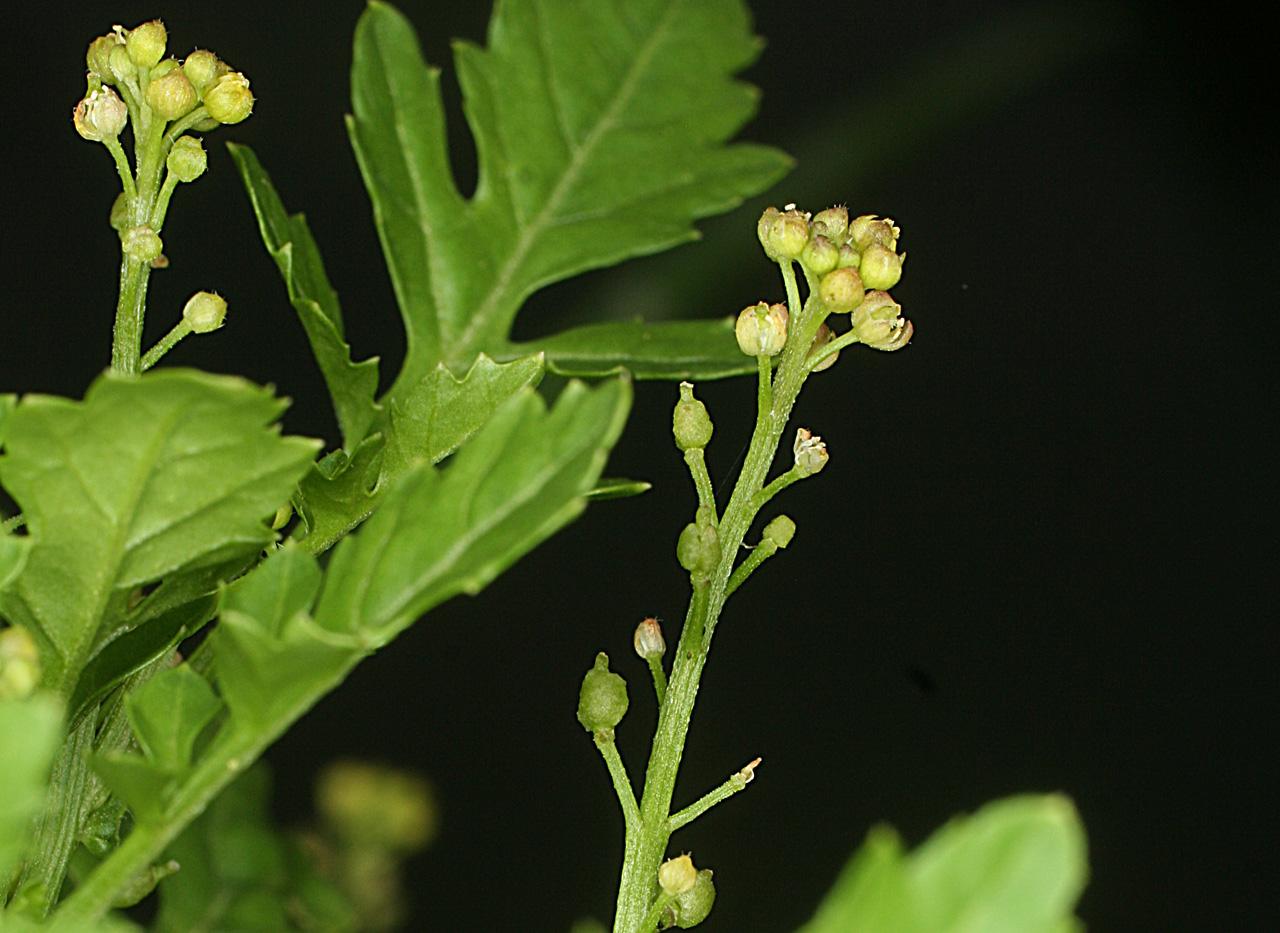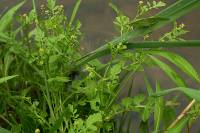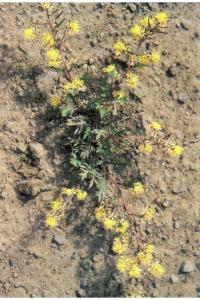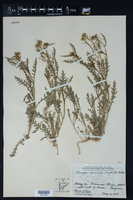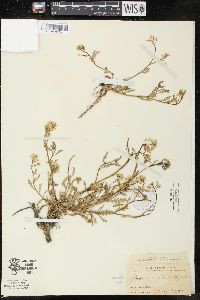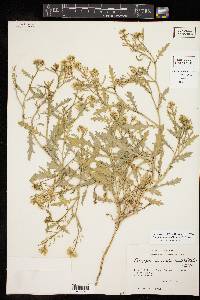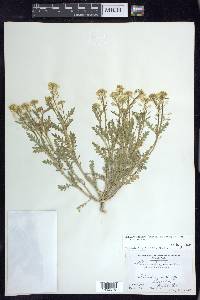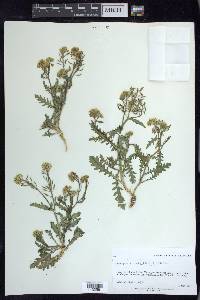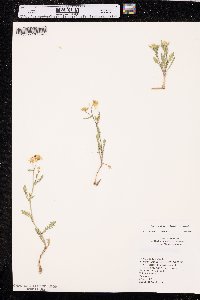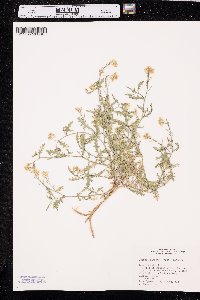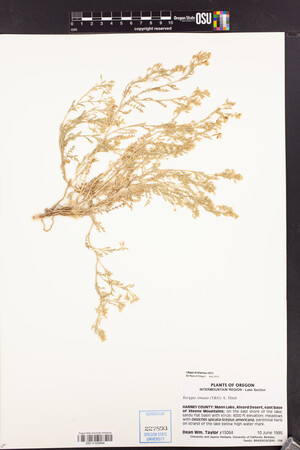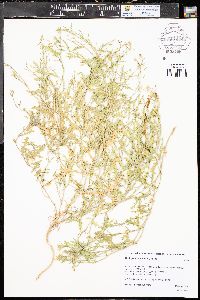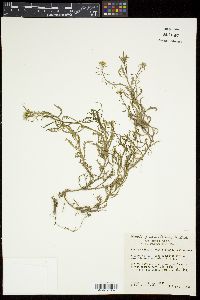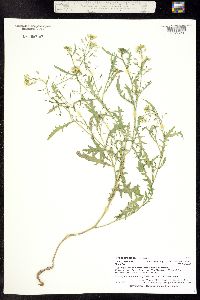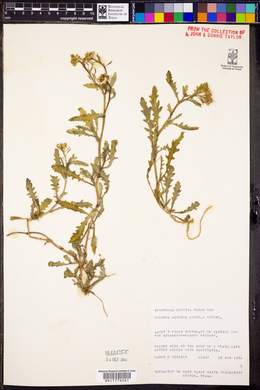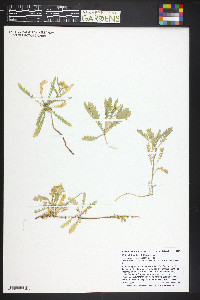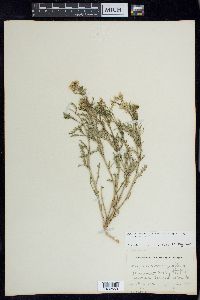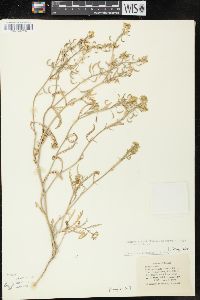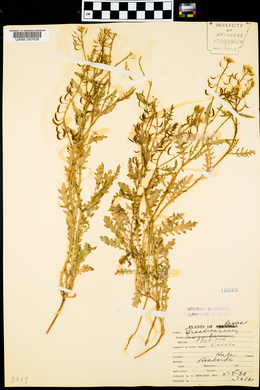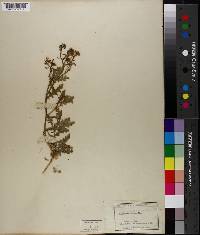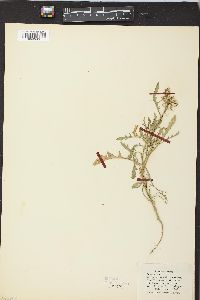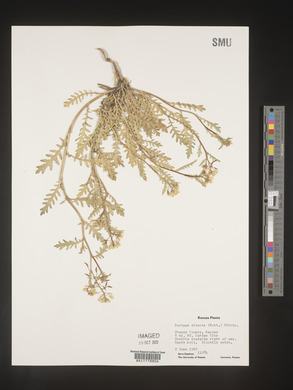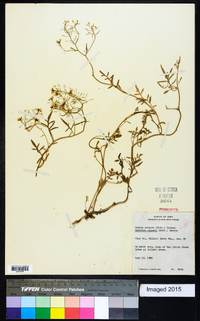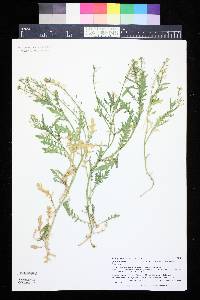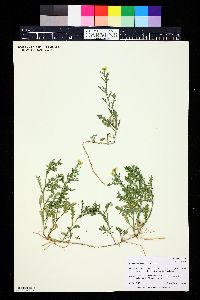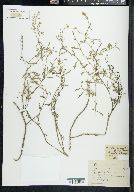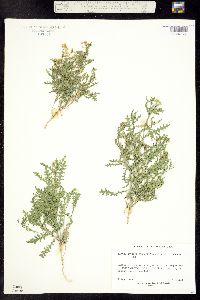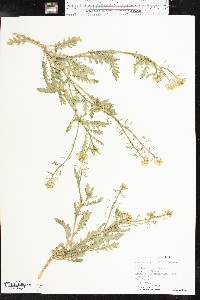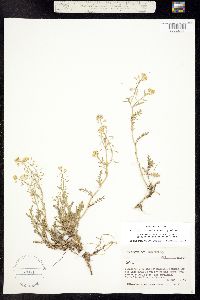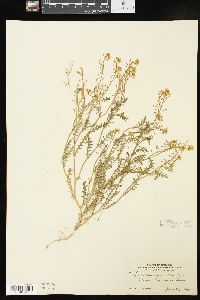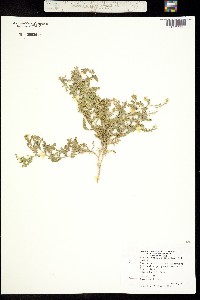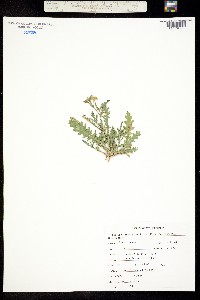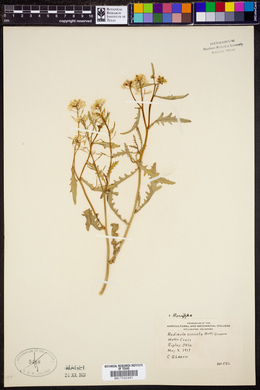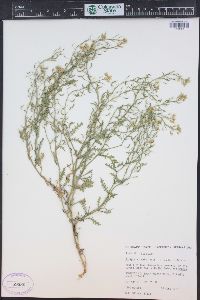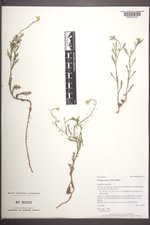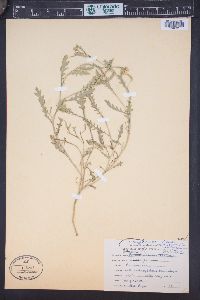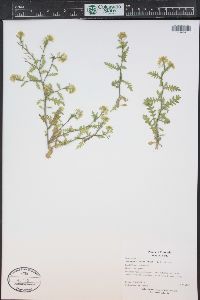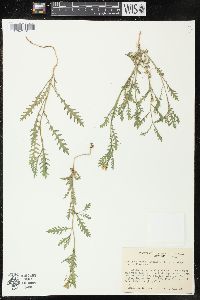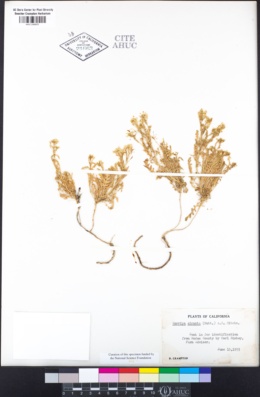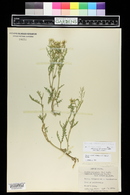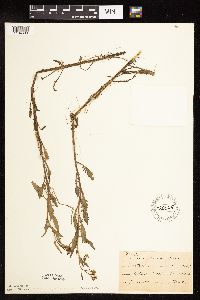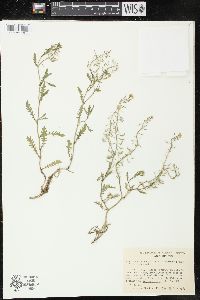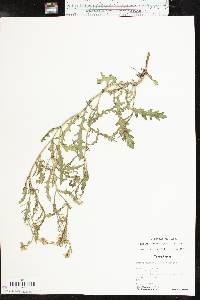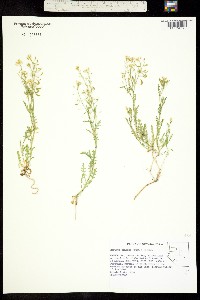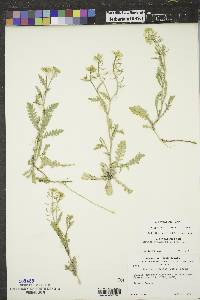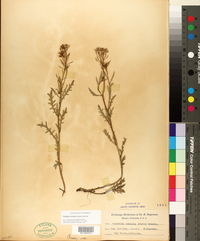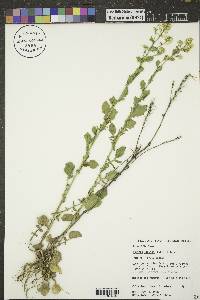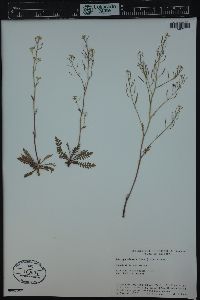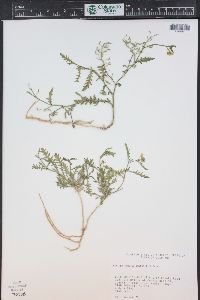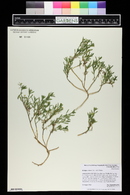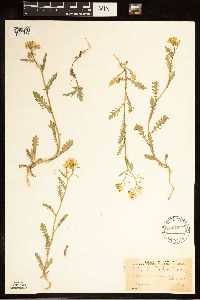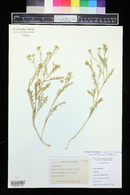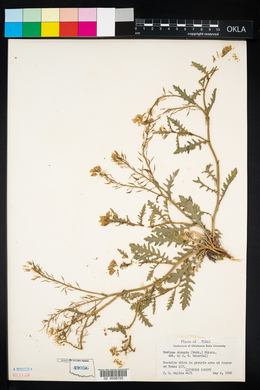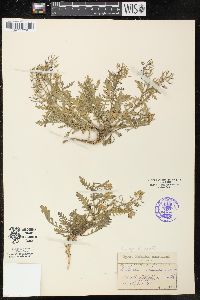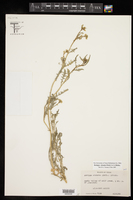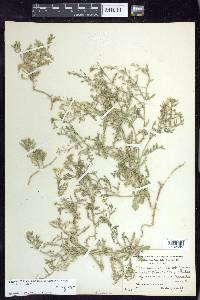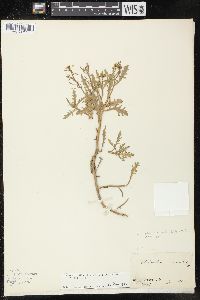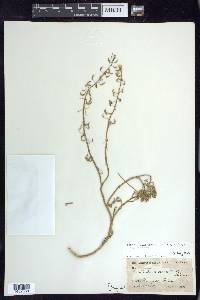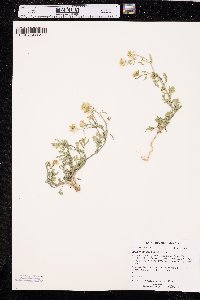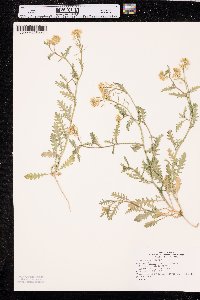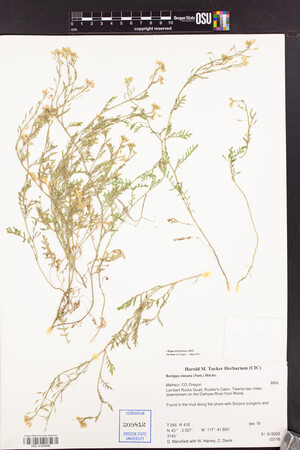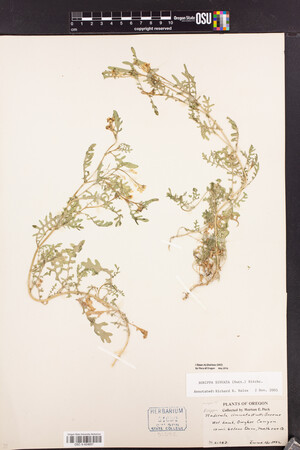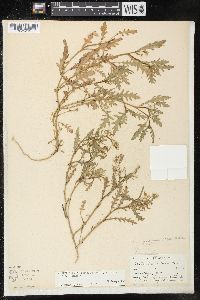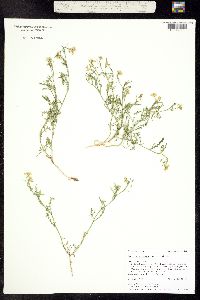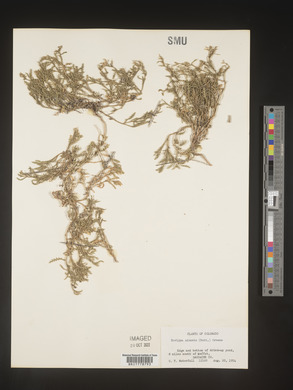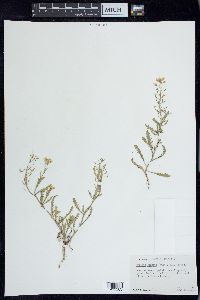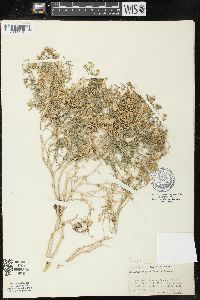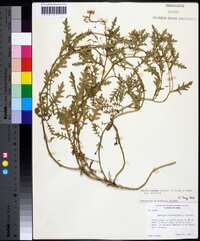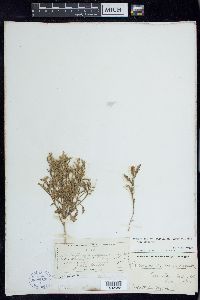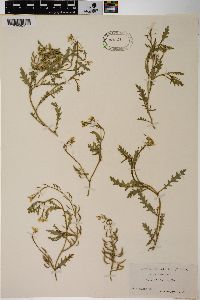
|
|
|
|
Family: Brassicaceae
bluntleaf yellowcress, more...Spreading Yellowcress, blunt-leaf yellowcress
[Nasturtium sinuatum Nutt., moreNasturtium sinuatum var. columbiae Suksd. ex B.L. Rob., Nasturtium trachycarpum A. Gray, Radicula sinuata (Nutt.) Greene, Radicula sinuata var. integra Jeps.] |
Perennials; (rhizomatous or with creeping roots); sparsely to moderately pubescent, (trichomes hemispherical, vesicular). Stems (many to few from base), decumbent or prostrate, branched distally, 1-4.2(-5) dm, (pubescent proximally). Basal leaves not rosulate; blade margins pinnatifid. Cauline leaves sessile; blade oblong to oblanceolate or lanceolate (lateral lobes oblong or ovate), (1.5-)2.5-6.5(-9) cm × 5-18(-25) mm, base usually auriculate, rarely proximalmost not auriculate, margins pinnatifid to deeply sinuate, or (lateral lobes) dentate to sinuate or entire, (surfaces pubescent abaxially with vesicular trichomes on veins, glabrous adaxially). Racemes considerably elongated. Fruiting pedicels divaricate-ascending to horizontal, sigmoid or recurved, 4-12(-14.5) mm. Flowers: sepals ascending, oblong, 2.2-3.7(-4.5) × 1-1.8 mm; petals yellow, oblanceolate to spatulate, (2.7-)3.2-5.3(-6) × 1.5-2.5 mm; median filaments 3-5.5 mm; anthers narrowly oblong, 1.2-1.7 mm. Fruits siliques, curved, oblong to lanceolate or linear, (4-)5-12(-16) × (1-)1.5-2.5 mm; valves glabrous or pubescent; ovules (30-)50-82(-98) per ovary; style (0.8-)1-2.5(-3.5) mm. Seeds biseriate, yellow-brown, angled, cordiform, 0.7-1 mm (0.5-0.6 mm diam.), colliculate. 2n = 16. Flowering Apr-Aug. Shores of ponds and lakes, sandy banks, stream banks, fields, wet depressions, gravel banks, ditches, moist grounds; 0-2600 m; Alta., B.C., Ont., Sask.; Ariz., Ark., Calif., Colo., Idaho, Ill., Iowa, Kans., Ky., La., Minn., Mo., Mont., Nebr., Nev., N.Mex., N.Dak., Okla., Oreg., S.Dak., Tenn., Tex., Utah, Wash., Wis., Wyo. Annuals or, rarely, perennials; (short-lived, terrestrial or of wet habitat, not submerged); glabrous or hirsute, (trichomes cylindrical). Stems (few to several from base), usually ascending, decumbent, or prostrate, rarely erect, branched distally, 1-4.2(-5) dm, (hirsute proximally). Basal leaves not rosulate; blade margins pinnatifid. Cauline leaves shortly petiolate or sessile; blade oblong or oblanceolate to obovate, (terminal lobe oblong), (2-)3.5-10(-12) cm × (5-)10-30(-37) mm, (lateral lobe smaller than terminal), base usually auriculate, rarely amplexicaul, margins: proximal pinnatifid or sinuate, distal dentate or entire, (surfaces sparsely pubescent). Racemes elongated. Fruiting pedicels divaricate-ascending to horizontal, straight or recurved, (1.2-) 1.7-5(-8) mm. Flowers: sepals erect, oblong, 0.8-1.8 × 0.5-1 mm; petals (erect), yellow, oblanceolate to spatulate, 0.5-1.8 × 0.2-1 mm; median filaments 0.9-1.3 mm; anthers ovate, 0.3-0.5 mm. Fruits silicles or siliques, curved, ovoid to pyriform, 2-8(-8.8) × (0.5-) 1-2.5 mm; valves glabrous; ovules (20-)30-80 per ovary; style 0.3-1 mm. Seeds biseriate, brown, cordiform, 0.5-0.7 mm, colliculate. 2n = 16. Flowering May-Sep. Muddy shores of lakes and ponds, stream beds and banks, edges of cultivated fields, wet roadside, meadows, seepage areas, ditches, creeks, gravel bars; 100-3500 m; Alta., B.C., Sask.; Ariz., Ark., Calif., Colo., Idaho, Ill., Kans., Mich., Minn., Mo., Mont., Nebr., Nev., N.Mex., N.Dak., Oreg., S.Dak., Tex., Utah, Wash., Wyo.; Mexico (Coahuila). Perennial herb with thin rhizomes 10 - 40 cm tall Leaves: alternate, pinnately divided, sometimes clasping, 3 - 8 cm long, 0.5 - 1.5 cm wide, reverse egg-shaped or oblong, bases sometimes lobed, tips usually rounded, sometimes shallowly toothed, sometimes with some bladder-like (vesicular) hairs. Leaf segments commonly five to seven pairs. Flowers: in branched clusters (racemes), which are borne terminally and axillary on the stems. Flower stalks 5 mm long and at right angles to the axis. Sepals four, upright to spreading, greenish yellow, to 4 mm long, 1.8 mm wide at base, tips pointed. Petals four, light yellow, 3.5 - 5.5 mm long, over 2 mm wide, longer than sepals, bases narrowed. Stamens six, upright. Anthers yellow. Fruit: a pod (silique), ascending, 5 - 12 mm long, 1.5 - 2 mm wide, cylindrical, often with bladder-like (vesicular) hairs, two-valved, on curved stalks to 1 cm long, with a 1.3 - 2.5 mm long beak. Seeds few. Stems: multiple, decumbent to prostrate, sometimes with bladder-like (vesicular) hairs, often rooting at the nodes. Similar species: No information at this time. Flowering: April to July Habitat and ecology: Typically found in moist to wet areas, especially along rivers, but rare in the Chicago Region. Two specimens from Cook and DuPage counties in Illinois, both found growing along a railroad, are believed to be introductions. Occurence in the Chicago region: native Etymology: Rorippa possibly comes from the Latin roro, meaning "to be moist," and ripa, meaning riverbank. Sinuata means "with a wavy margin." Author: The Morton Arboretum Perennial 1-4 dm, usually with several ascending branches from near the base, the stem and lower surface (or at least the midrib) of the lvs sparsely to densely beset with small, vesicular, hemispherical trichomes that may be collapsed and scale- like in dried specimens; lvs all cauline, 3-8 נ0.5-1.5 cm, oblanceolate or oblong, auriculate-clasping or not, pinnatifid, the segments commonly 5-7 pairs, spreading or ascending, usually obtuse, entire or with a few teeth, separated by rounded sinuses; lateral sep somewhat saccate at base; pet light yellow, 3.5-5.5 mm, surpassing the sep; mature pedicels slender, ascending to recurved, 5-9 mm; frs subterete, 5-12 נ1.5-2 mm, straight or upcurved, often beset with vesicular trichomes, abruptly narrowed to a slender stylar beak 1.3-2.5 mm; 2n=16. Moist, especially sandy soil, fields, and shores; Ill. to Alta. and Wash., s. to Ark., Tex., and Calif., and occasionally adventive eastward. Apr.-July. (Radicula s.) Gleason, Henry A. & Cronquist, Arthur J. 1991. Manual of vascular plants of northeastern United States and adjacent Canada. lxxv + 910 pp. ©The New York Botanical Garden. All rights reserved. Used by permission. |
This project was made possible in part by the Institute of Museum and Library Services [MG-70-19-0057-19].
Powered by Symbiota

